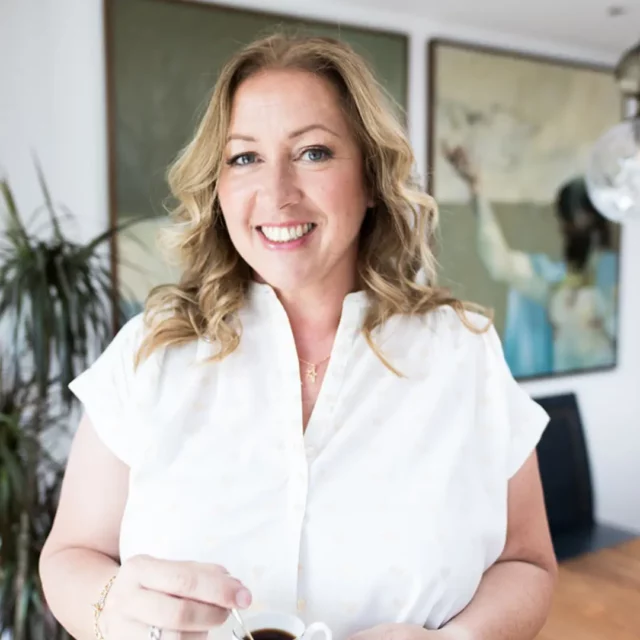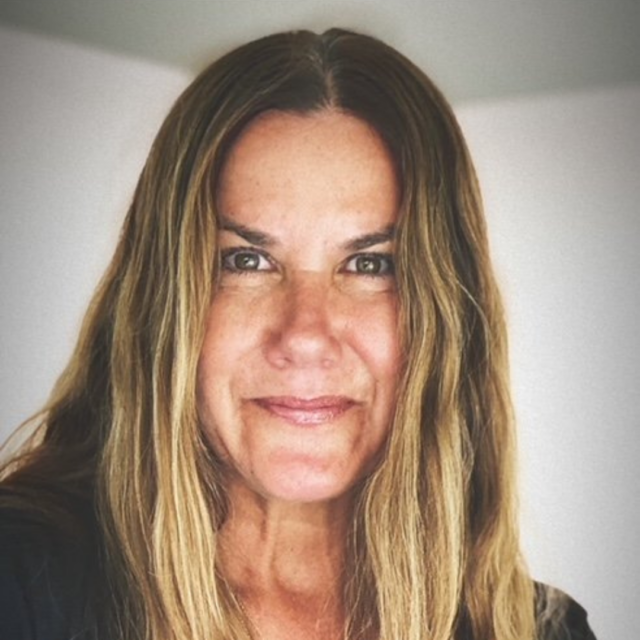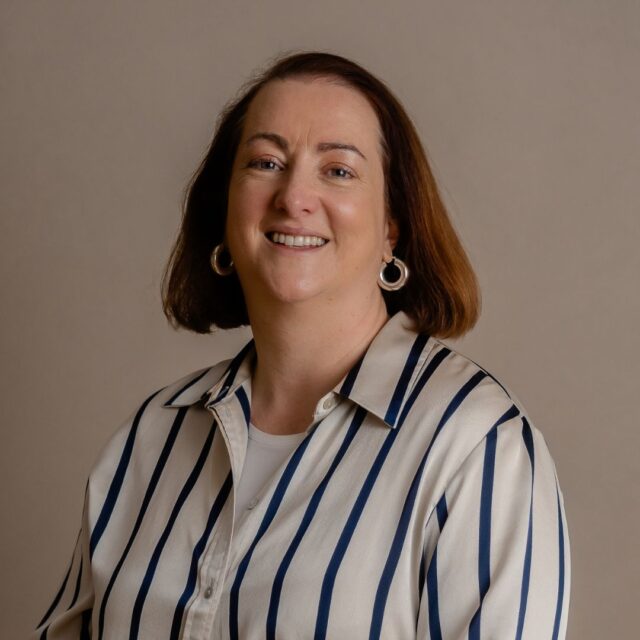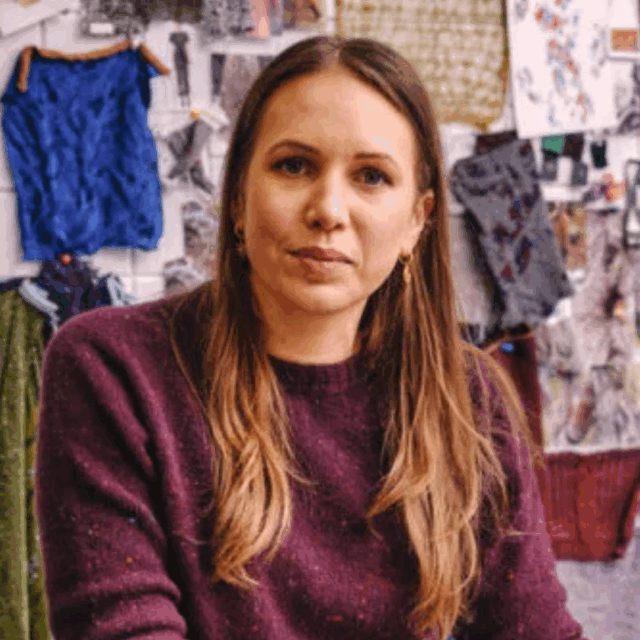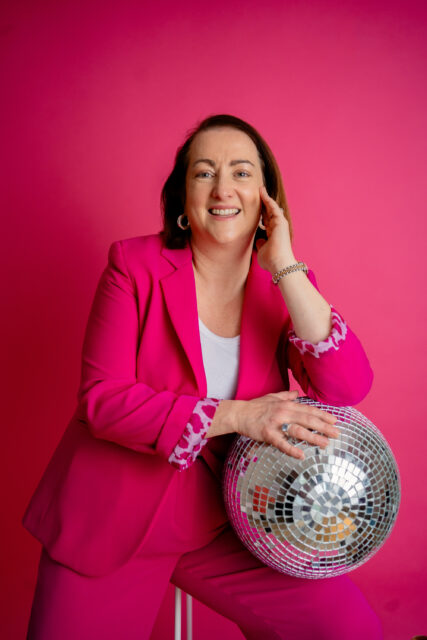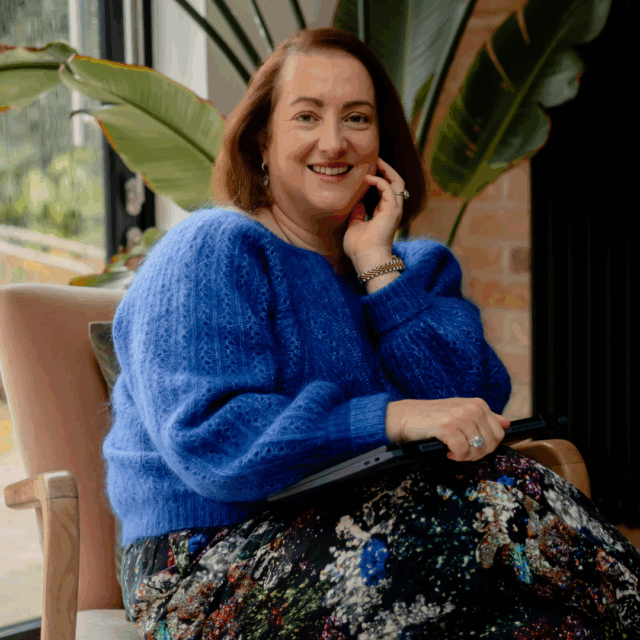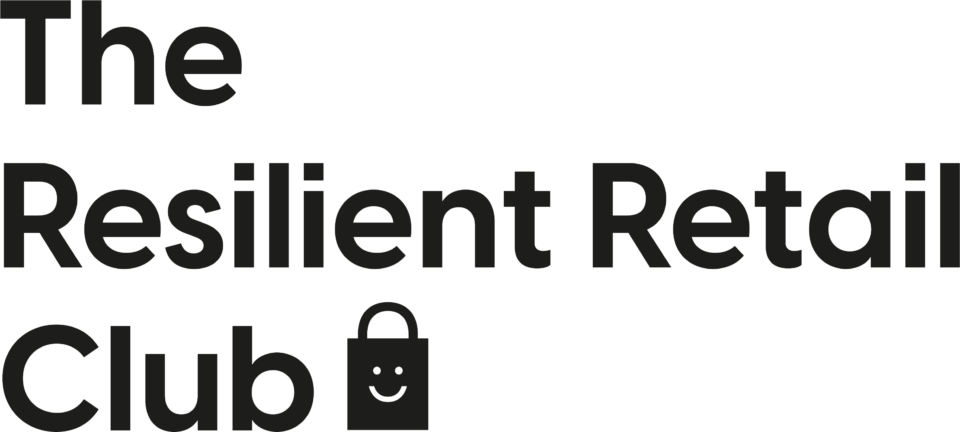Unlocking the Power of PR for Retailers with Fiona Minnett
Introduction to PR and Today’s Guest
Catherine Erdly: Have you ever wondered how PR can positively impact your business? If so, then today’s episode is going to be right up your street.
Meet Fiona Minnett: Small Business PR Expert
Catherine Erdly: I am joined by Fiona Minnett, who is an absolute PR expert. What she doesn’t know about small business PR isn’t worth knowing. I’m delighted she’s joining us on the podcast.
Hi, I’m Catherine Erdly. I’m your host for today’s podcast, as well as the founder of the Resilient Retail Club. Which is my membership group and mastermind, as well as my done for you stock service, stock doctor. And you can find out more about all of those at resilientretailclub.com.
Can’t wait to jump into today’s episode. I’ve worked with Fiona over many years. And as I said, she’s a real expert in this area, so can’t wait to share her top tips for you.
Welcome to the Resilient Retail Game Plan, a podcast for anyone wanting to start, grow or scale a profitable creative product business with me, Catherine Erdly. The Resilient Retail Game Plan is a podcast dedicated to one thing, breaking down the concepts and tools that I’ve gathered from 20 years in the retail industry and showing you how you can use them in your business.
This is the real nuts and bolts of running a successful product business, broken down in an easy, accessible way. This is not a podcast about learning how to make your business look good. It’s the tools and techniques that will make you and your business feel good. Confidently plan, launch, and manage your products, and feel in control of your sales numbers and cash flow to help you build a resilient retail business.
Fiona’s PR Journey and Expertise
Catherine Erdly: Fiona, thank you so much for joining us today. I’m so excited to talk to you on the podcast. Do you want to start off by introducing yourself and who you are and what you do?
Fiona Minnett: Absolutely. Thank you so much for having me. I am thrilled to be here. My name is Fiona Minnett. I am the founder of Boss Your PR. I am a PR expert and coach working with scaling female entrepreneurs to leverage and maximize the power of PR and visibility.
Anything visibility PR related is absolutely my jam. Anytime I get the chance to talk about it, I will. I want to share the mission far and wide that PR is and should be accessible to everyone. Absolutely.
Catherine Erdly: Amazing. And I should say we’ve worked together over a number of years, probably five years now.
Fiona Minnett: Yeah. It was pre COVID I think, wasn’t it? That we started one to one and then it all kicked off.
Catherine Erdly: Yes.
Fiona Minnett: PR wise and life wise.
Catherine Erdly: And also you have a long background in PR as well.
Fiona Minnett: Yes. So I I don’t know, it’s probably about 15 years in PR. So I I fell into PR. I didn’t study PR at university. I fell into PR. And I was like, Oh, this is a good fit. I’m quite enjoying this. Started working in agency. I then worked in house for a period and essentially I did about a year and a half in PR kind of learning how it all worked and I guess the naivety of youth when I was 24, I think it was, I was like, yeah, I’m going to set up my own agency. So it was a kind of whatever I don’t know now, I will learn on the job and I will find my way through it.
I ended up running my own agency for about six years.
I took about a year and a half off when I had my daughter. And when I got back into PR, I didn’t want to be restricted by that retainer model. I didn’t want to be restricted by that kind of monthly fee because ultimately there’s still businesses that is prohibitive for.
So my thing then became, how do I take everything that is percolating up in my brain, in times of my experience, my expertise, and how do I start sharing that in a more accessible way . So yes, then I started teaching. So I’ve been in that teaching, coaching, consultancy, kind of education space in terms of DIY PR and the kind of broader power and impact of visibility since 2017, now or thereabouts.
My PR journey, I feel has been quite varied. And it’s, it certainly brought me to a place that I didn’t ever expect to be in terms of, introducing myself as a PR expert and coach.
Catherine Erdly: Amazing.
The Mission to Democratize PR
Catherine Erdly: And so does that where your mission, which is to democratize PR comes from? So is that kind of the basis of it then? Do you want to explain a little bit more about what that means to you?
Fiona Minnett: absolutely. I think the process of PR has changed massively, even from, the sort of 15 years that I’ve been in the game, so to speak. Everything in a way is more accessible. But I think for me, certainly when I started this bossy PR journey, it felt like.
PR still felt very out of reach to your average business. There was a lot of misconceptions about it. It’s either that, that it’s fluffy and not for your typical business, if you like, or it’s that it’s for the big corporates or we’ve got that kind of political spin take on PR or that it’s Coca Cola’s of this world.
And really, it didn’t feel like there was anything speaking to the audience that I felt would be benefiting from PR the most, which is startups, SMEs, female entrepreneurs, micro businesses, because PR is essentially it’s free. A lot of it is free. What I teach is, it’s not about paying for marketing routes.
It’s not about paying for advertising. It’s about how can you find yourself and leverage yourself into these spaces that doesn’t cost you anything, but the can be infinite, in terms of the audience reach. And For me, it just seemed like a no brainer that this stuff should be accessible for businesses without the big budgets.
So yeah, it was seeing this disconnect, really, between the power of PR and this kind of understanding of it. And really then, democratizing it became the best word to sum it up, in terms of making it accessible, because it really, Needed to be. And I think there is many more people like myself that are teaching the stuff that are in that coaching space.
And so the movement is growing and it’s exciting to see, but I think there’s still a lot of misconceptions around PR and how people can access it.
Catherine Erdly: And you’ve worked with some big organisations, so you have got people like the BBC, for example, who’ve been a bit more, thinking about not just small business, but also how creators can use PR and things like that. So that must be exciting.
Fiona Minnett: Yeah, absolutely. And this is this, this is a thing like I would never have conceived of where my work would take me and to be able to work with. So I’ve worked with BBC studios with their talent works branch previously. And they recently did a collaboration where they actually got an ongoing partnership with TikTok, which is all around kind of content creators and basically how TikTok and BBC can be giving them platform to reach a broader audience can be, nurturing this talent into the presenting world and into these online BBC spaces.
Yeah, to be called in, I was called in to deliver. Essentially media training. The how can these amazing creators be packaging out their personal brand, be presenting themselves to the world, be able to articulate their mission, but also to be able to sit on the sofa on the one show, for example, and, speak clearly and articulately and really get across that messaging and those takeaways that they want to impact their audience with.
Being able to do things like that and to work with these sort of companies in these big names that really understand the power of how the media works. And then, I’ve worked with Domestika, so a global online education platform.
I’ve created a course in collaboration with them. So again, for me, like I said, I’m on this mission. I am like on my soapbox well and truly. So to be able to do that in collaboration with these incredible businesses is is really exciting. I think it shows the importance of this kind of visibility piece, if you like.
Catherine Erdly: Yeah, for sure.
Types of PR for Product Businesses
Catherine Erdly: So that brings me on to my next question then, which is the different types of PR. So everyone listening to this is product business, whether they’re bricks and mortar or whether they’re e commerce. So probably I’d say. Most people are familiar with the kind of idea of product PR, you know, get your product in the gift guide.
What other kinds of PR do you think that product businesses should have on their radar and why? Hmm.
Fiona Minnett: Doing like all these lovely little cliches. But this is true is that product placement, if you like that kind of product PR into the gift guides, these kind of product roundups in the media, that’s your bread and butter as a product business, right?
We always want to try and maintain that momentum. When it comes to putting product in front of consumers in that way. But I think that there is kind of safety for founders in hiding behind the product, I think that sounds a little bit generalized, but I think it’s easy to step back and go, I want to let my product do the talking, which is amazing.
And, of course there are different approaches work and suit different businesses. And I respect that. can mean that there’s a lot of PR goodness that isn’t necessarily being leveraged. Things like, the opportunity for founder profiling. The founders, the creators, the designers, the people behind these businesses to be able to tell their story.
Whether that is their entrepreneurial journey or their design process or how a certain collaboration or collection came about or maybe they want to open up more. personally about hurdles or what were the catalyst moments for them in creating their business. And there’s a lot of layers quite often to the stories of the founders of the people behind the business.
I think that’s something that’s really lovely to be able to tap into. So there’s that kind of founder profiling angle. But also quite often you will find that owners of product businesses have an area of expertise. They have an area of specialism, okay, whether it is in the problem that their product solves or, their expertise has brought them to this point where they can create what they’ve created.
And it’s easy to assume that expert positioning piece is best left or is more suited to service providers, for example. But again, if we’re not tapping into those areas, we’re missing a trick. And like I said, PR is free. This isn’t, I can only afford to do one avenue. This is, if you’ve got the toolkit and if you understand how it works, you can open so many more doors without it costing you a penny.
It is just a case of okay, I need to spend a bit of time to work out who I want to pitch and what I’m going to pitch to them. But ultimately the process is the same. What you’re leveraging is slightly different and is sometimes more powerful. So I’ve quite often found working with product businesses.
So there’s a, an amazing company that I worked with called Florian Bill back in my agency days, and we did a huge amount of product placement and she Had to warm up a little bit to doing the profile stuff.
Catherine Erdly: What kind of products was it?
Fiona Minnett: It was vintage upcycled vintage chairs. So like cocktail chairs and G plan and that kind of, really nice, classic pieces.
So the beautiful products, we did a lot of product placement, you know, covers of the interior magazines and all of that jazz. And it is always interesting to see kind of sales and how things translate. So yes, you’d have a query of sales with a product placement, but sometimes it was the profile pieces that converted even better because we like to.
Get to know the people behind the business. We like to get to know the story behind the business. We like that kind of behind the scenes. What’s the phrase that as a business, you need to storytell, not sell that kind of founder piece allows you to do that kind of thing.
So it was interesting once she was open to that sort of stuff, it was like okay, let’s do that. Let’s do a balance of the two, because I feel like you are giving yourself the best chance of reaching the broadest audience in the most potent ways, because some people are going to connect to the product and some people are going to connect to the story.
So it feels odd to just do one without the other.
Catherine Erdly: Yeah. And what kind of angles were they covering in the profiles? Like you said, like the behind the scenes, how she started it, or was it about like her personal style? Cause she had interiors or?
Fiona Minnett: It can be anything. So with with Amy particularly, it was that she started very small. She started on Instagram. So it was that kind of angle was. You know how I built my business on Instagram and it’s gone from kitchen table to showroom and I guess that applies for so many more businesses these days, but also I think It’s really easy to do ourselves a disservice in terms of saying I don’t have a story or I’m, not that interesting or really, my product is the hook or you know that’s the story that I want to tell and great, of course your product may have a hook It may have a story You But I think every person has a story and it becomes about how do we peel back the layers of the onion, if you like to really find that.
So whether that is an unusual beginning to your business or whether that is a kind of a catalyst moment in your life, move from the city to the coast. Inspired a new business or a move from the corporate world into a wellbeing training inspired a new business. But equally it doesn’t have to be that dramatic.
It’s what are your triggers? What are those catalyst moments? And, what is the reason that you do what you do?
I’ve got a lady that’s just completed my group. Program, and she is a kind of, she works with leather. She creates these beautiful bespoke leather jackets and accessories.
And for her, part
Catherine Erdly: I know who,
Fiona Minnett: yeah, part of her story is like this kind of lineage of her, grandmother and her mother and all these skills that have been passed through the generations. And now she’s taking that mantle and she’s doing her own thing. And we’re tapping into that heritage.
And also the notion of heirloom fashion is creating. Beautiful pieces that kind of stand the test of time and that you can pass down. So it’s, that is where the kind of product and the story of the founder can really align to create a beautiful angle. Cause then you go, Oh, heirloom fashion. Is this the sustainable fashion trend we need to be more aware of, in 2025, for example.
So you can really layer on these seeds of an idea.
Catherine Erdly: Yes, now I totally see that.
PR Strategies for Bricks and Mortar Stores
Catherine Erdly: So I wanted to ask a specific question, particularly as it relates to bricks and mortar stores, because what I often find is if you’re a bricks and mortar, let’s say you’re a gift boutique, you’re probably buying in other people’s products. So if You are focused on product placement as the way of doing PR and you think that’s the extent of it.
Then what happens is a lot of times people think, Oh it’s not for me because I can’t, there’s no point me pitching this product for a gift guide because it’s actually the brand’s product and they may have pitched themselves, or maybe it’s not as interesting to editors, that kind of thing. Or I might get it featured, but then it would just say it’s this brand and not relate back to me.
So particularly when it comes to bricks and mortar stores, do you have any tips about the kinds of pieces or the kinds of angles that might work for them in particular?
Fiona Minnett: I love this. I love it. And I think it breaks down into a few different elements and I’m trying to make sure that I will remember them all. My response. I think ultimately, Product placement can still be a viable route for bricks and mortar businesses. And it becomes about how well you articulate the credit information.
It’s X at Y in terms of it’s X brand stocked at, Y. Retailer, and there is still value to that. And that’s something that I’ve done with a lot of brands previously.
I literally top of my mind and I’m not sure why, but was a bike retailer that was London based. They did sell online.
But their location was London based. That’s where they started. And they were selling a lot of these European brands to a UK audience. Whatever the name of the helmet was, it was the kind of, X helmets at and Dutch.
So you’re able to then pick up the credit if you articulate it properly in the credit information. So there is still value to doing that. Now, the other side of the argument is. Is it worth pursuing national coverage if I am a bricks and mortar store regionally located and I rely on footfall and I’m not selling online and how does this national coverage benefit me? This national coverage benefits you in more ways than one. So whether it is product placement or whether it is storytelling about the founder, about the business, about any kind of narrative in and around that, is that you will still get people in your locale. That are reading this coverage, but also you will still get people in your locale in your audience that can be influenced by this coverage.
So even if they themselves are not reading Good Housekeeping or the supplement with the Mail on Sunday, they’re not necessarily seeing you in there, but you leveraging that result to your audience. Sharing it to your mailing list of local customers, putting it in your window, sharing it on your social media.
We, as consumers, we’re magpies for things like that. It’s oh, shiny, oh, logo, oh, media win oh, not, not everyone can get these kind of results. So actually to see these kind of national placements. influences the regional locale that you are wanting to target. So I think it is always worth being open to exploring these things because they give you kudos and credibility above and beyond the audience that you hit.
So yeah, I think it’s tricky, but equally, yes, absolutely invest more of your time in the regional stuff, if that’s what’s going to, every locale has a regional glossy, has the variety of magazines, local papers, has local bloggers, or, these kind of regional online platforms.
So there’s a huge amount of scope there again with product, but also. with your story. So again, recently the lovely lady who, who does the the leather goods, she is in the Northern Life gift guide that’s come out this week, because again, that’s like regionally focused, but we’ve still hit for all the other national gift guides.
Why not have the mix of both?
Catherine Erdly: Yes. Yes.
Fiona Minnett: you choose to tell the stories.
Catherine Erdly: Yes. Yes. And of course there’s a huge amount of kudos when they’ve got these lists where they have, best independent retailers, whether that’s national or local.
Fiona Minnett: Absolutely, and Stylist Magazine have done some great roundups previously. Conde Nast Traveller as well, they’ll tap into these local areas. and pull out the best of them. And you see this in with a sort of restaurant world as well. The Guardian do a lot of these good sort of food write ups and they’ll pick these lovely little foodie places from various areas across the UK.
And, that stuff is all national, but they’re focusing on little pockets of brilliance that you get with the indie business, small business communities. So there is a lot of Scope, there’s a lot of opportunity out there for you to be building a broader brand recognition that will still benefit you in terms of regional footfall.
Yeah, absolutely.
Catherine Erdly: Yeah. So it will benefit sales. It will benefit awareness and I’m sure there’s huge benefits from things like SEO and all of those things.
Fiona Minnett: Right? It’s like I’m saying, don’t focus on just product placement, explore the other opportunities because the compound effect is so much larger. So if you are focusing on, one thing in isolation, can you diversify your energy? Absolutely. To do the online PR that will support the SEO, to do the founder storytelling, to do the networking, so you bring this all into the PR pick and mix as I like to frame it.
Catherine Erdly: Fantastic.
Getting Started with PR in 2025
Catherine Erdly: So let’s just go forward then to 2025. Let’s say somebody’s listened to this podcast and they think, okay, yes. Let’s do it. I want to put PR on my focus list for 2025. I want to think about product placement, but beyond that, myself as a founder, and I think I can come up with an angle and where should they start?
Where, what next?
Fiona Minnett: So there’s a few different starting points. So if product placement is something that you still want to retain on the cards and that you want to make the most of it through next year, it really becomes about thinking a about your year ahead in terms of what is launching what you’ve got coming up when your key retail periods or promotional hooks are, but also thinking about the media cycle and the typical lead times.
So monthly magazine will work three to six months in advance. A weekly magazine will work. Anywhere from a few to 12 weeks in advance and online can be relatively immediate. I think days to two weeks, sometimes hours, but average days to weeks. And if you have that in mind and you’re thinking summer’s a big retail time for me.
Then you need to be tapping into that in January, February. in order to do long leads and then to do the weeklies and then to do the online. So have a think forward in terms of what your year looks like in terms of seasonal hooks, keep in mind on that product placement front in particular, the media is not reinventing the wheel.
So if you are looking back at previous issues, if you can access digital issues there’s various apps on which you can do that is, is have a look at What the magazines were sharing last year, this year, use that to inform how you approach next year in terms of those seasonal hooks and the kind of product placement aspect of it in terms of where you would start for something around your story or expertise, your kind of knowledge as a product business founder, have a think about where your value is.
In terms of, what do you think is most resonant or appealing about your story? What can you offer in terms of expertise that is valuable to a journalist for what they’re writing, but also then is valuable to that end audience, to the reader or the listener?
Catherine Erdly: Do you mind if we just do a quick, like two or three examples of a business and what the expertise angle might be? Cause I think this often trips people up and they think I don’t know. So let’s say let’s say let’s say a gift boutique.
Fiona Minnett: Boutique. Love it. Okay. Because then you’ve got this whole concept of what are the best gifts for X, Y, and Z recipients? What are the best gifts for, I don’t know to celebrate such and such an occasion or maybe you broaden out in terms of thinking outside the box for gifts. It’s taking your product as a starting point and then building beyond that.
So it might actually be that you have an awareness of gifting trends coming up. So if we think back to COVID and the kind of rise of those letterbox gifts, that kind of thing would have been great to have an opinion on. So what is coming up? Is it the move to more sustainable?
Is it that this kind of wrapping trend of. It’s, I can’t remember what it’s called, where there’s you, fabric wrapping and Yeah. And that kind of, there is a word for it. I can’t remember what it is, but yeah, we call it fabric wrapping, is that still really prevalent? So you’re broadening beyond your product.
And, I just really want people to be able to tap into that value that I know is there. They know their stuff. It’s just going, how can I then translate it?
Catherine Erdly: so if you’re a kidswear brand, for example, you might be talking about sustainable fashion, kidswear trends.
Fiona Minnett: Yes, and you’re allowed to have opinions as well. So on Kidswear, I remember Erica Davies influencer fashion writer, she started talking a lot on her stories about how how stereotypical fashion was for girls and how fashion was for boys. And on that kind of narrative for boys was, everything was action heroes or comics.
There was no stylish neutral clothing and, she had an opinion on it, but then you could see brands. Getting involved and having them. So I think there is something around design, around how you design for certain age groups or personality types, or, how you broaden out your offer.
What is your take on stereotyping or, do you advocate for more gender neutral options or there’s, obviously it depends on. How not political, how much of your opinion you want to share, but equally, like you say, on that kind of sustainable manufacturing front on sort of conscious consumerism on how the fashion industry needs to change or how you’re changing with it or how you’re part of the solution.
All of those things allow for this storytelling and expert positioning, expert comment, but also any business that is functioning as a business that has, the expenses and it has to cover that accounting and they have business rates and pay taxes and all that jazz. Things like the budget, things like changes in this kind of economic infrastructure, how does that impact you?
You can give your expertise from your standing as a business owner. You can share your opinions. So it goes. Product is the starting point and then you can go beyond there. Have you got another example? I feel like you, you wanted to give me three, but I keep talking.
Catherine Erdly: let’s go with skincare. Last one, skincare. Yeah.
Fiona Minnett: and you can attest to the benefits of X, Y, and Z ingredients. But if someone, if a magazine is looking for comment on the best ingredients to use. To respond to whatever the skin condition might be. What ingredients are most soothing for eczema?
You it might not be the right opportunity for you to promote your product necessarily But you can position as a formulation expert because you have created your own products and you can say I literally do not skincare expert and it’s just the first thing that’s come into my head, you know so Aloe vera might be a really good ingredient for this condition.
So please listeners, don’t take that as advice. But, the principle is that you can offer up value and you can do it in a way that positions your expertise around your product. So there will be opportunities as a skincare expert or as a formulations expert and as an expert in the beauty space where you’re not necessarily pushing your product to it, but you’re able to give validated opinions and expertise that you can then share with your audience.
Oh look, I’m commenting on the best skincare or the best ingredients for X, Y and Z. It enhances your credibility and your positioning as being the right person to be formulating these products and to be selling these products to your consumer.
Catherine Erdly: Got it. Fantastic. Great.
Final Tips and How to Connect with Fiona
Catherine Erdly: Just very quickly then final tip. So we’ve said if it’s on your radar, you’ve got to think about what think about product placement and think about the cycles. Think about your angle and what’s your final tip if to on how to get started.
Fiona Minnett: I think also is that, the media, the PR in media terms is amazing, but it’s not the be all and end all. So if the media as an entity sounds scary, It doesn’t need to be scary. We can break it down, but if that sort of feels a little bit too big for you, then there are plenty of other starting points.
So you might start entering awards, whether that’s you as a founder, as an entrepreneur, as a business owner, or you’re nominating your product, you might start blogging, you might start doing more networking, you might start guesting on podcasts. to tell more of your story or, speaking at local networking events to again, tell your story, tell the journey of your brand, share some of your expertise.
So there are so many ways. To sharpen leverage PR before you even get to the media, if you like. But I think also a key point to mention is that everyone listening to this is probably already doing that PR. You are probably already doing your own PR because you are visible on social, you are producing social media content.
You are probably growing a mailing list and you are sending newsletters or email updates. Essentially, you will already be communicating with stakeholders in and around your business. And that’s what PR is. Public relations is all about communication with those key people around your business and about growing that audience of key people around your business.
So you’re already ticking off some of the elements of PR. It’s now about how can we build on that? How can we go further?
Catherine Erdly: Love that. So if it feels intimidating, you’re probably already doing it. Fiona, thank you so much. I’ve really enjoyed our chat. Do you want to tell everyone how they can find you and work with you?
Fiona Minnett: Yes. So I am Boss Your PR on everything on Instagram at BossYourPR. My website is BossYourPR. com. And I would just love to hear from anyone that wants to either know more about PR or wants to challenge me. Fiona, what is my story? Fiona, what is my angle of expertise? Fiona, what is the best approach for me to take?
I am always happy. To give you some starting points. So please do slide into those DMS. Let me know how I can help you where you think you might want support, or if you just want a little guidance and a couple of pointers to get you started, that is a okay by me.
Closing Remarks and Podcast Outro
Catherine Erdly: Thanks so much for tuning in. I hope you enjoyed today’s episode. Why not hop over to Instagram at resilient retail club.
Let me know what you thought about today’s episode and if you have a moment, please do rate and review the podcast. You can do so on Apple podcasts, or you can rate the podcast in Spotify. And of course, if you like follow up, subscribe, you’ll be the first to know about every new episode as it comes out each week on a Thursday.
See you then.

